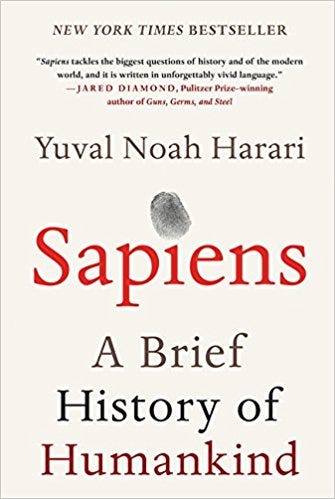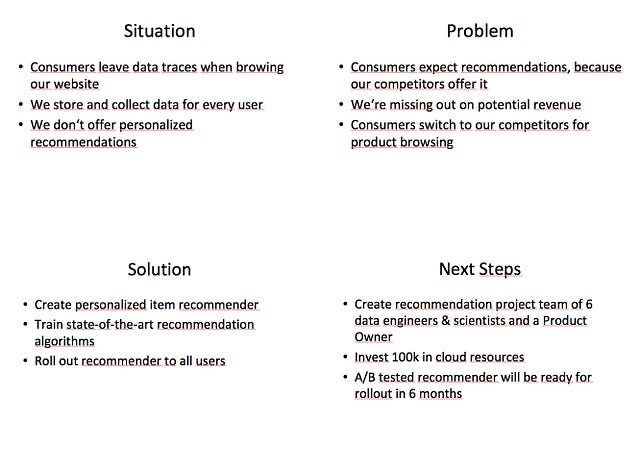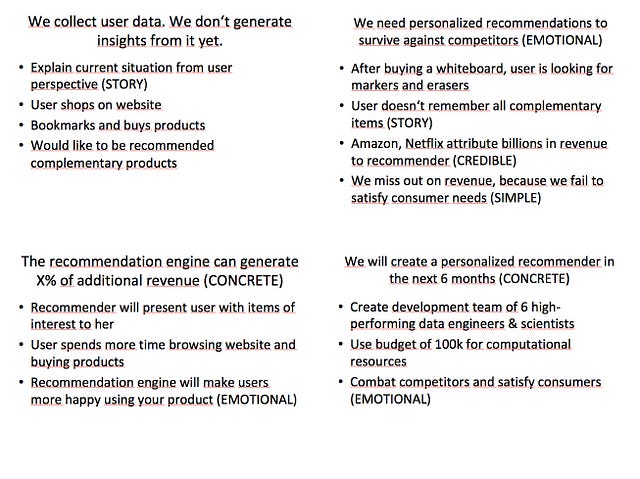Ready to learn Data Science? Browse courses like Effective Data Visualization developed by industry thought leaders and Experfy in Harvard Innovation Lab.
Turn data into stories to persuade your audience

Source: https://bit.ly/2uX5enz
Harvard Business Review recently published an article on what leading Data Scientists actually do. Surprisingly enough, the key skill is communication, rather than experience with statistical models.
Aristotle argued that to persuade people, you need to use Ethos, Logos, and Pathos. Ethos establishes the credibility of the speaker, and Logos appeals to the reasoning used. Yet, both are useless without Pathos, the way to the heart of the audience. The Homo Data Scientistus generally falls in love with causal, data-driven reasoning when presenting their work. This is generally the right way to argue. But to evoke actions, Data Scientists need to tell stories.
Maybe stories are just data with a soul. — Brené Brown
This article presents two frameworks for structuring presentations and emotionally binding your audience. It will help you evoke the actions that you want. Use responsibly.
Language to tell stories
According to best-selling author and scientist Yuval Harari, language was invented to tell stories. Contrary to public opinion, language was not invented to coordinate work more efficiently or to create military plans. Since the stone ages, humans used stories to comfort each other, bicker about issues and form social alliances.
(Wo)Man … is the storytelling animal. — Graham Swift, Waterland

Source: https://amzn.to/2P8zum3
Humans to this day are not rational beings. We talk, think and dream in stories. When debating public policy options, we reason emotionally instead of rationally. When hearing a story about what happened to our neighbors’ friends, we draw generalizations from this single story instead of taking a step back and evaluating the data.
On a daily basis, Data Scientists need to explain results of complex models simply and understandably to stakeholders. They also need to pitch projects. When doing either, storytelling should be the tool of choice for Data Scientists.
The first section explains the SPSN-framework to create a result-driven storyline. The second section examines the SUCCESs framework to make your story as emotionally appealing as possible.
Creating a storyline for your presentation

Photo by rawpixel on Unsplash
Management Consultants have known for a long time: You first put an effort in creating a solution, then you need a cohesive storyline to convey the solution. Naturally, solving the issue starts with analyzing the available data. In this regard, Consultants are very similar to Data Scientists. Let’s use some of their tricks in the next step to our advantage.
Data makes people think, emotions make them act. — Antonio Damasio
A commonly used framework to structure presentations is the Situation-Problem-Solution-Next Steps framework, short for SPSN. It is perfected in EY’s digitalization practice around AP Robert Jung. With just four slides, you are able to communicate any problem and touch on its solution.
Situation: To start, describe the current state to your audience. What is the status quo you’re trying to change?
Problem: Next, picture the problem. What’s the issue with the situation? Wherein lies the pain you’re trying to solve?
Solution: Present the solution. How do you solve the problem? How do you cure the pain?
Next Steps: You convinced the audience. What are the next steps you need to take? Which actions need to be taken?
Let’s apply this framework to a common Data Science goal. You’re part of an e-commerce company and try to convince your superiors to develop a recommender system. The blank slides could look like this.

As you can see, the SPNS-framework clearly lays out the four slides we need to persuade the audience of our idea. Something is still missing though. Let’s spice up the storyline with the SUCCESs model next.
The salt in your story
Now that you have created the raw storyline, let’s turn it into a story.

Chip & Dan Heath analyze in their often referenced book Made to Stick what all sticky stories have in common. They all, to some degree, use elements of the SUCCESs model. The model will help your idea stick with the audience even after the presentation. The acronym stands for the following:
Simple: Keep it simple. Data Scientists often fall in love with technical details. Really focus on the most important message you’re trying to bring across.
Unexpected: Use the element of surprise to get the attention of the audience. Break expected patterns.
Concrete: Use concrete examples. Help your listeners or readers picture the situation that you’re trying to solve.
Credible: Get credible resources to back up your claim. Use data, or external validation, to give your story credibility.
Emotional: Remember that not your numbers will make people care, but your people stories will make them care. We want to help people, not just reduce costs or improve efficiency. Appeal to the five emotions of fear, happiness, surprise, sadness, and love/hate.
Stories: Every story has a hero, an obstacle to be overcome and a happy ending. Try to make a story out of your point to help it stick.
Let’s add these elements to the blank structure to spice up our story.

As you can see, we incorporated most SUCCESs elements in out storyline. While this is not necessary for every good story, it surely helps.
In a third step, you will accompany your presentations with visuals. The more visuals and the fewer bullet points, the better. Insert revenue graphs from your company and use company style guides. However you proceed, your storyline is clear now.

xPhoto by rawpixel on Unsplash
Data Scientists must communicate effectively. You have seen how you can harness the power of storytelling to turn numbers into emotions and into actions. Keep this hybrid framework in mind when preparing your next presentation, post or speech. It will pay off.
Key Takeaways:
- To persuade people, tell a story
- Lay the foundation with the Situation-Problem-Solution-Next Steps framework
- Integrate SUCCESs elements to create a narrative
Closing
Jeff Bezos, Amazon’s CEO, banned PowerPoints from executive meetings. Instead, he asks presenters to write 6-page memos in a narrative style. It could show how users, team members or media outlets write a story about the fictional new product. Jeff understands the power of storytelling. Do you?
Additional material
- Yuval Harari — Sapiens
- Chip & Dan Heath — Made to Stick
- Johnathan Gottschall — Storytelling Animal



